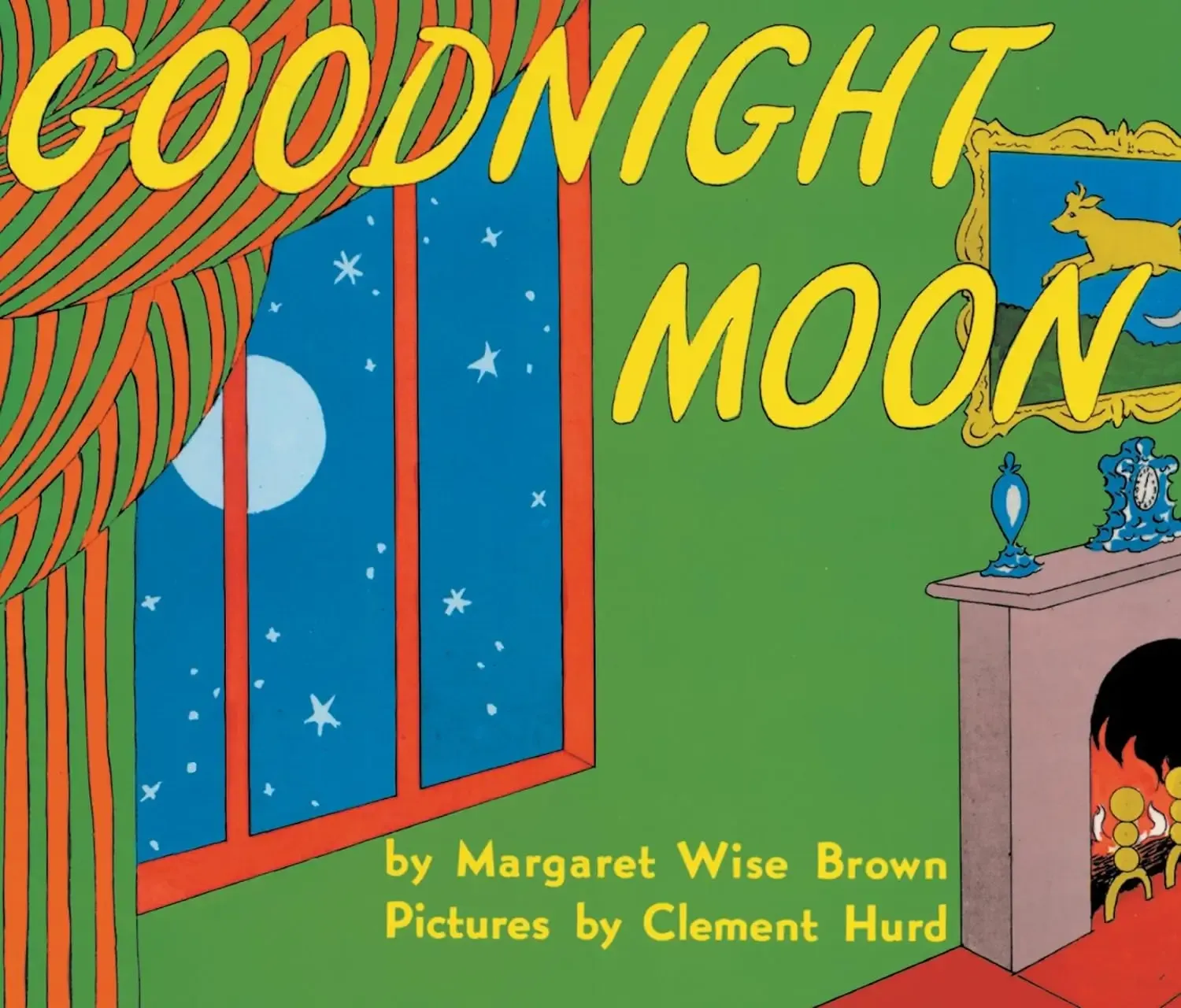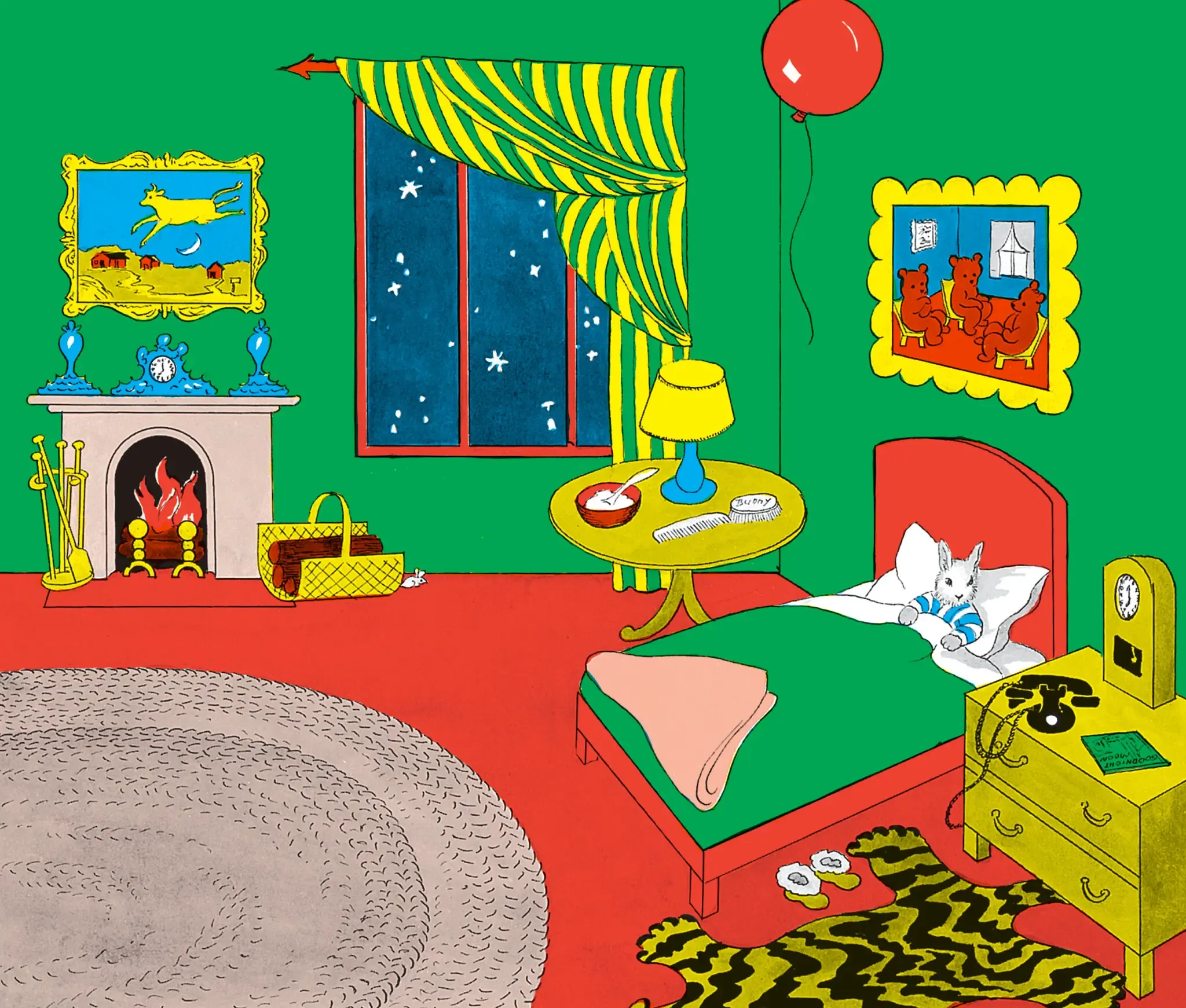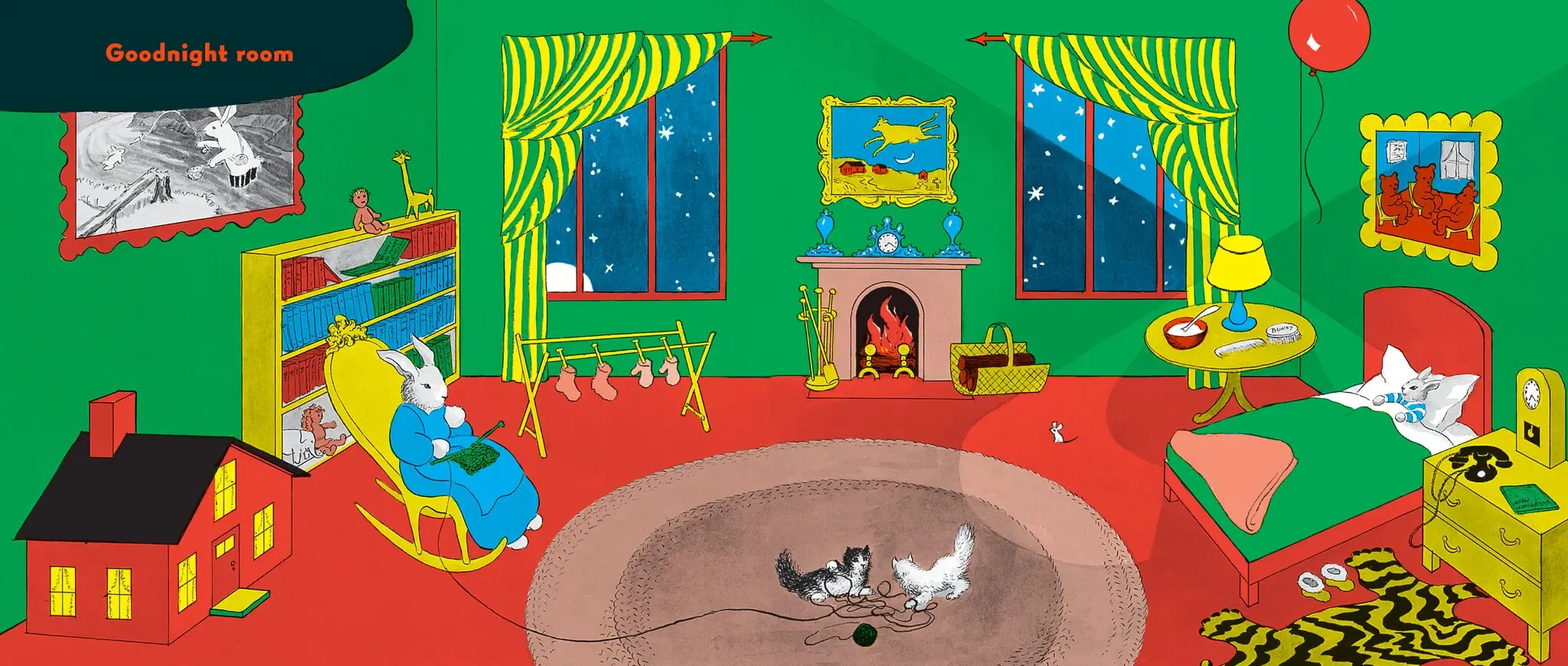Margaret Wise Brown’s Goodnight Moon is a timeless classic in children’s literature, celebrated for its simplicity, comforting tone, and imaginative illustrations. First published in 1947, this gentle bedtime story has been loved by generations for its quiet rhythm and soothing pace, making it a beloved fixture in countless bedtime routines. With Brown’s poetic prose and Clement Hurd’s warm, engaging illustrations, Goodnight Moon captures the magic of winding down and saying goodnight to the world around us.
The story is set in a cozy room, where a little bunny is tucked in bed, slowly saying goodnight to everything around him. The text flows like a lullaby, listing the familiar items in the room, “the comb and the brush and the bowl full of mush”, in a way that is rhythmic and inviting. Each page turns like the ticking of a clock, reinforcing the calming ritual of saying goodnight. Brown’s use of repetition gives young readers a sense of security and routine, which can be especially reassuring as they settle down for the night.
Hurd’s illustrations perfectly complement the text, alternating between vibrant full-color spreads and softer black-and-white images. The warmly lit room, with its details of a clock, a fireplace, and the moon glowing through the window, creates a sense of coziness that draws readers into the bunny’s world. Young readers enjoy spotting familiar objects from page to page, and each item feels more meaningful as the bunny says goodbye to it. The progressive dimming of the room, from bright to shadowed, reflects the natural slowing down that comes with the end of the day, reinforcing the bedtime theme.
Another reason Goodnight Moon resonates with readers is its celebration of the ordinary. The little bunny’s goodnights are to everyday things, a chair, a pair of socks, the stars. This attention to ordinary details encourages children to pause and appreciate the small, comforting things around them. Brown invites readers to see bedtime as a gentle ritual of gratitude and wonder, finding beauty in the familiar. The book teaches that everything has its place, even in the quiet moments, and this perspective can help children develop a sense of calm and appreciation.
Though simple, Goodnight Moon is full of warmth, creating a connection between reader and story that makes it feel timeless. Its words and images resonate with a kind of magic that encourages children to slow down, pay attention, and enjoy a moment of stillness before drifting off to sleep. With its blend of poetic writing and comforting visuals, Goodnight Moon is more than a bedtime story, it’s a work of art that has become a comforting ritual, passed down through generations, and remains one of the most cherished picture books of all time.
The book’s repetitive structure and gentle pacing make it easy for children to follow along, even as they grow sleepy. The simple act of saying goodnight to familiar objects helps children feel secure and comforted, making it easier for them to relax and drift off to sleep. Parents and children alike will appreciate the book’s soothing tone and reassuring message, making it a beloved part of many families’ bedtime routines.
Goodnight Moon is a timeless classic that continues to captivate young readers with its gentle charm and comforting message. Whether you’re reading it for the first time or revisiting an old favorite, the book’s quiet magic is sure to leave a lasting impression. So snuggle up with your little one, turn down the lights, and say goodnight to the world together. Sweet dreams!
Questions to ask while reading:
- What do you think the little bunny is saying goodnight to in each picture?
- How do the illustrations change as the story progresses?
- Why do you think the author chose to include certain objects in the bunny's room?




